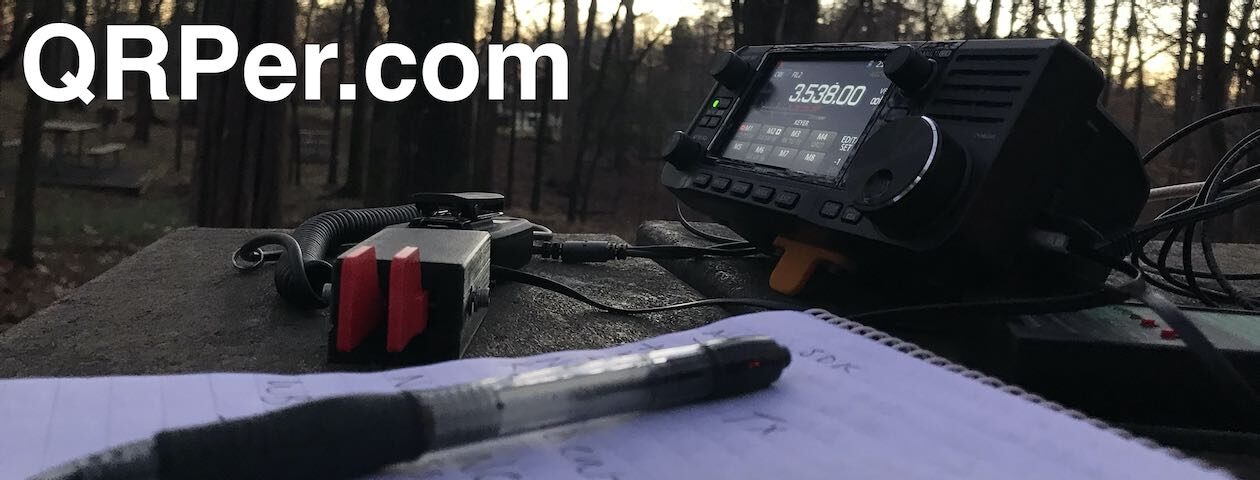Activating on the Road: National Parks
by Brian (K3ES)
This article continues my series from our 2024 road trip across the United States (Six Weeks and 7300 Miles: Activating on the Road). I hope to wrap up the series with one last article soon. In this report, I will cover the six National Parks (NPs) that we visited during our trip. I activated five of them for the Parks on the Air (POTA) program using CW mode at 5 watts. A previous report on Stealth Activating with the KX1 Antenna System provided activation details for three of the parks (Badlands NP, Yellowstone NP, and Grand Canyon NP), so I will not reproduce activation details here, but I will include more of Becky’s pictures.
Each of these NPs is spectacular in its own right, and also distinctly different from each of the others. We were able to see some of the sights, but by no means had enough time to do them justice. In fact, as we completed our drive through Yellowstone NP, Becky and I committed ourselves to going back again and spending much more time to see its wonders.
As I reflect on our visits to NPs on our trip, it occurs to me how beneficial it was to buy an Annual America the Beautiful National Parks and Federal Recreational Lands Pass before we left on our trip.
 The pass costs $80 for a year, and generally covers the admission of one vehicle and its occupants. We were able to save on admission costs several times over, making this one of the best NP values going. Having now completed 62 trips around the sun, when we next visit NPs, I am eligible for an even better value, the $80 Senior Lifetime America the Beautiful Pass.
The pass costs $80 for a year, and generally covers the admission of one vehicle and its occupants. We were able to save on admission costs several times over, making this one of the best NP values going. Having now completed 62 trips around the sun, when we next visit NPs, I am eligible for an even better value, the $80 Senior Lifetime America the Beautiful Pass.
Badlands NP
The first NP we visited on our trip was Badlands NP in South Dakota. We spent a couple of nights and days based nearby in the town of Wall, so we were able to take two drives through the park. There is a stark transition from rolling plateau north of the park to the spectacular peaks and canyons of the badlands. Rapid erosion has been shaping the terrain for about 500,000 years with the Cheyenne and White Rivers cutting their way through the terrain. The resulting landscape is both beautiful and severe.
While visiting the park, we were privileged to see a variety of wildlife. We saw a number of bison, ranging from small herds grazing in fields along the road, to an individualist who took a liking to the taste of grass beside one of the overlook parking areas. There were also bighorn sheep and pronghorn antelope wandering other parts of the park. There was abundant bird life, from a disoriented prairie chicken that accepted water from concerned visitors, to birds of prey soaring high above. Becky particularly enjoyed the frenetic activity of the residents of Roberts Prairie Dog Town.


During our visit, we stopped at an overlook parking area for Becky to take pictures of the spectacular scenery, including the aforementioned bison. While she was doing this, I took the opportunity to do a stealth activation of the park, which is documented in an earlier Field Report here on QRPer.com, linked as K3ES: Stealth activating with the AX1 Antenna System.


Yellowstone NP
We knew when planning our trip, that we would not have time for a proper visit to Yellowstone NP. In fact, we intended to hold off on visiting until we had time for a dedicated trip. But throughout our drive, Becky kept searching the available maps for opportunities and possibilities. As we traveled through Montana, she noticed that we could fit in an abbreviated trip through Yellowstone and Grand Teton NPs if we adjusted our route. Consequently, we found ourselves spending the next night in Gardiner, MT, just outside the north entrance to the park. Continue reading From the Badlands to Mesa Verde: QRP Across America’s National Parks
































































































